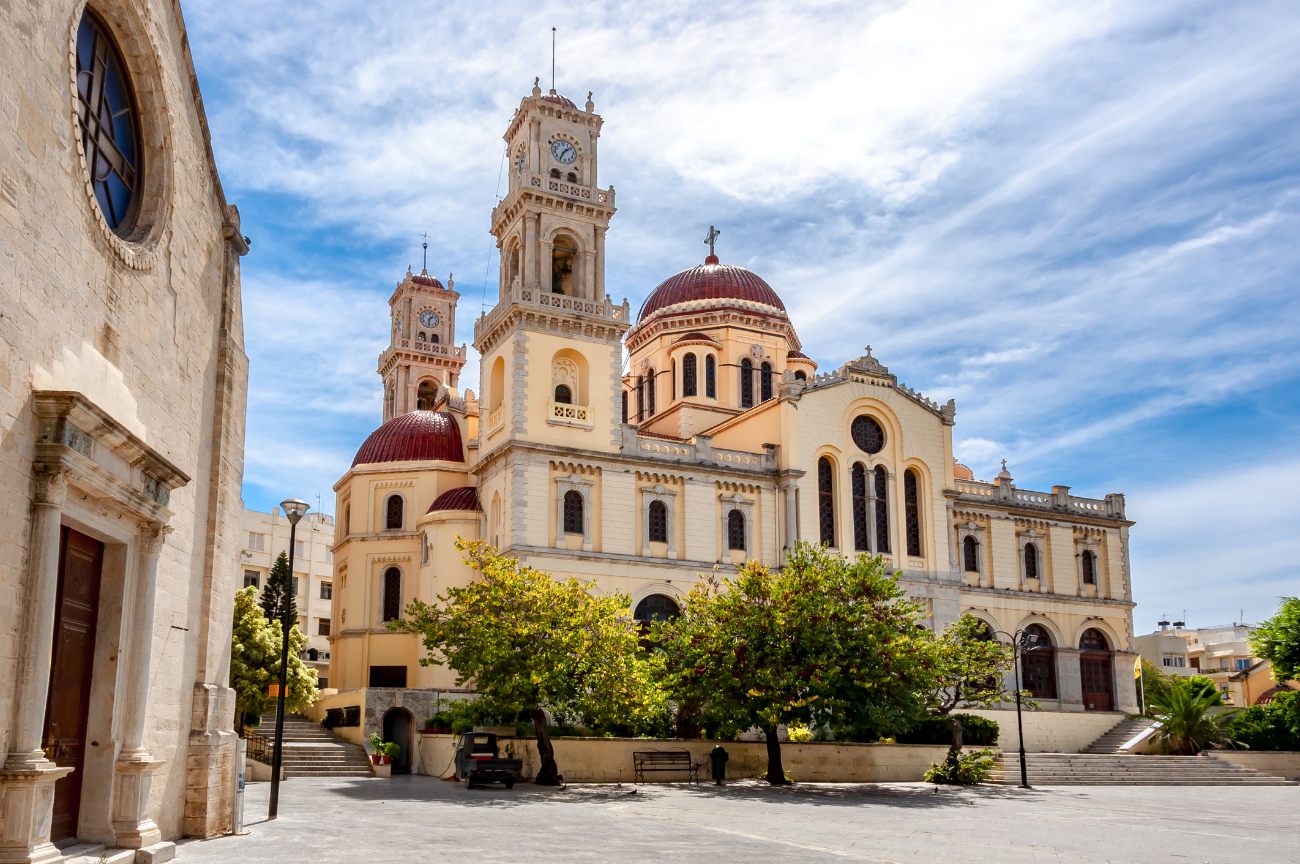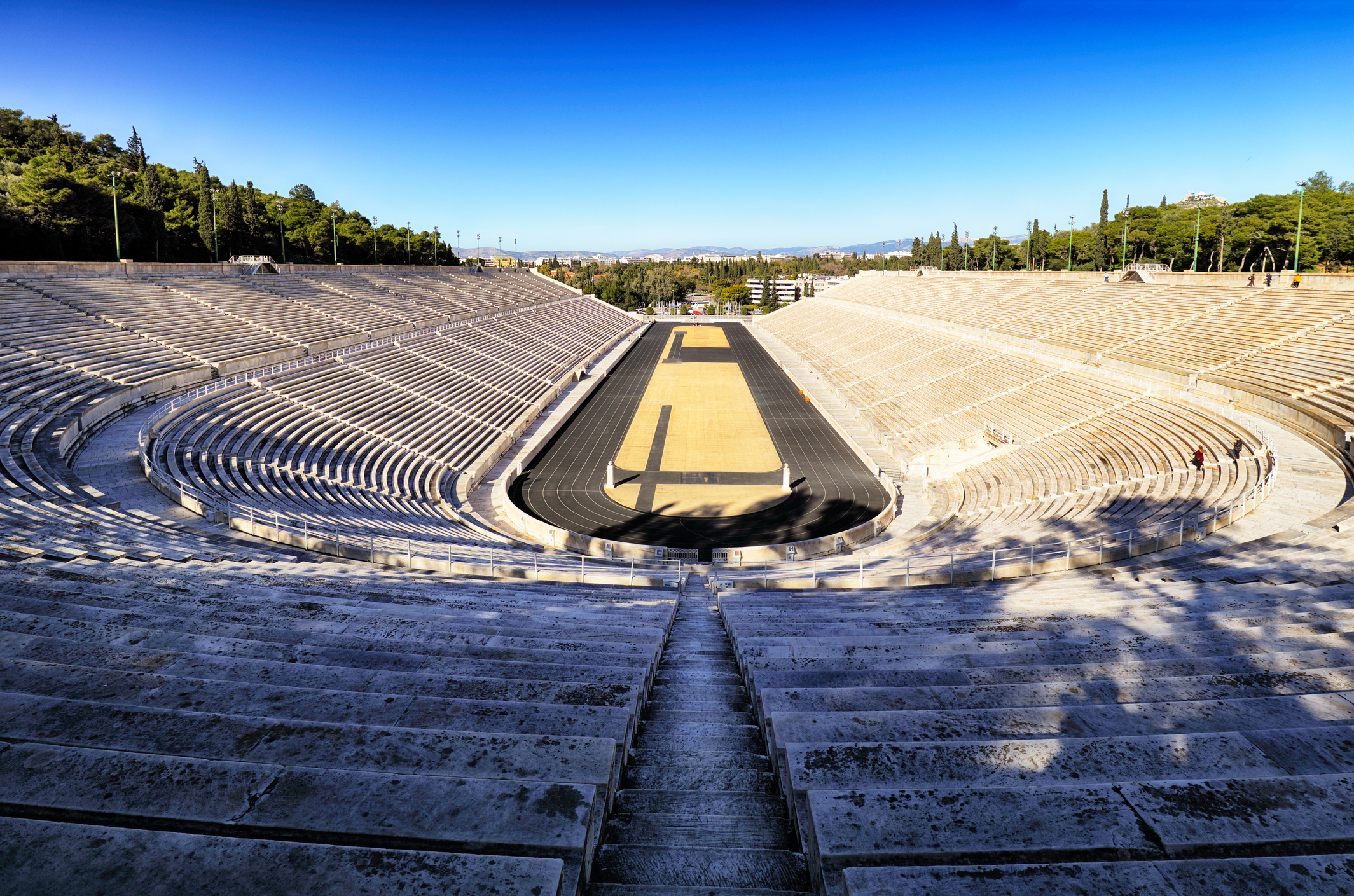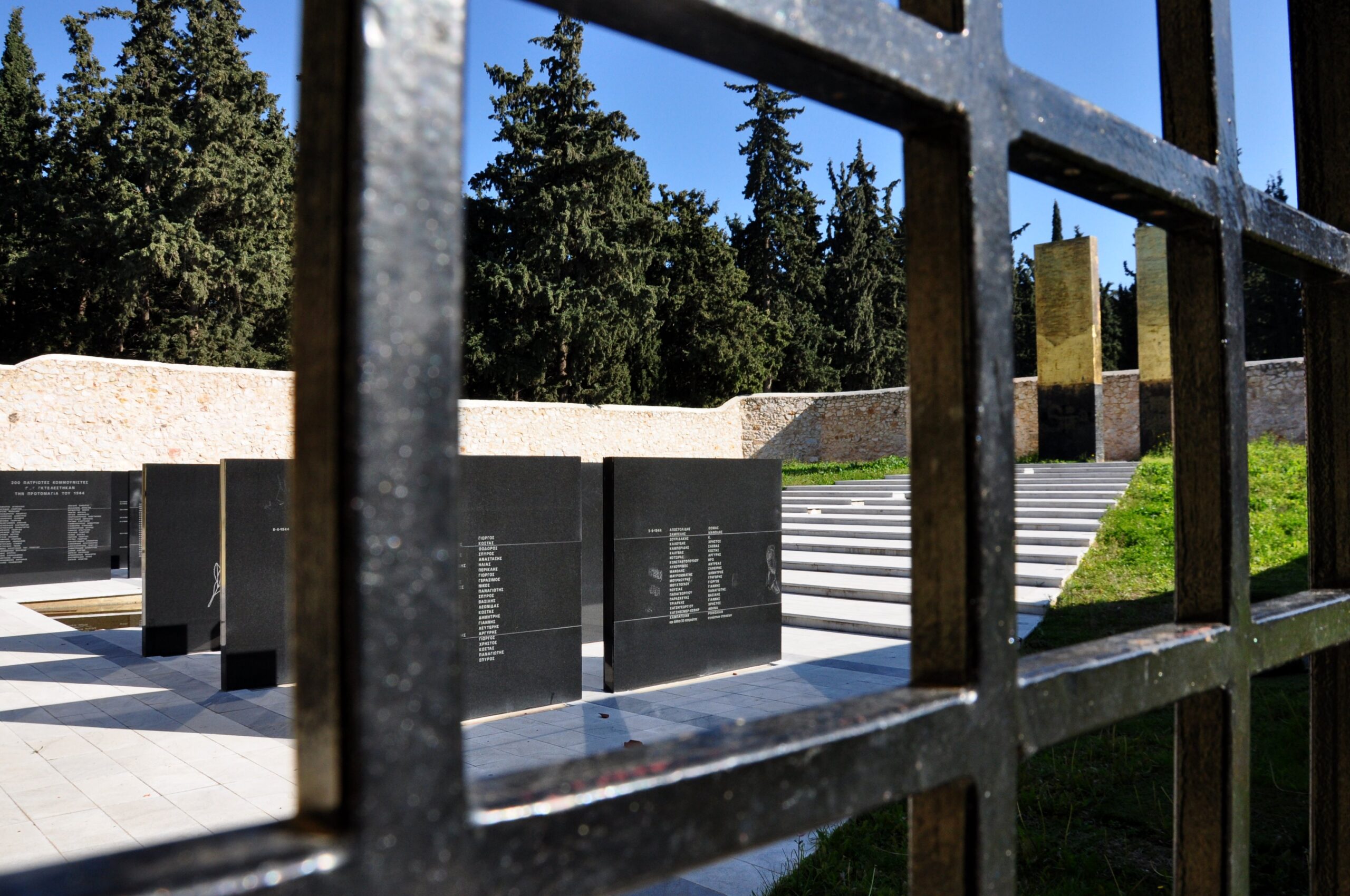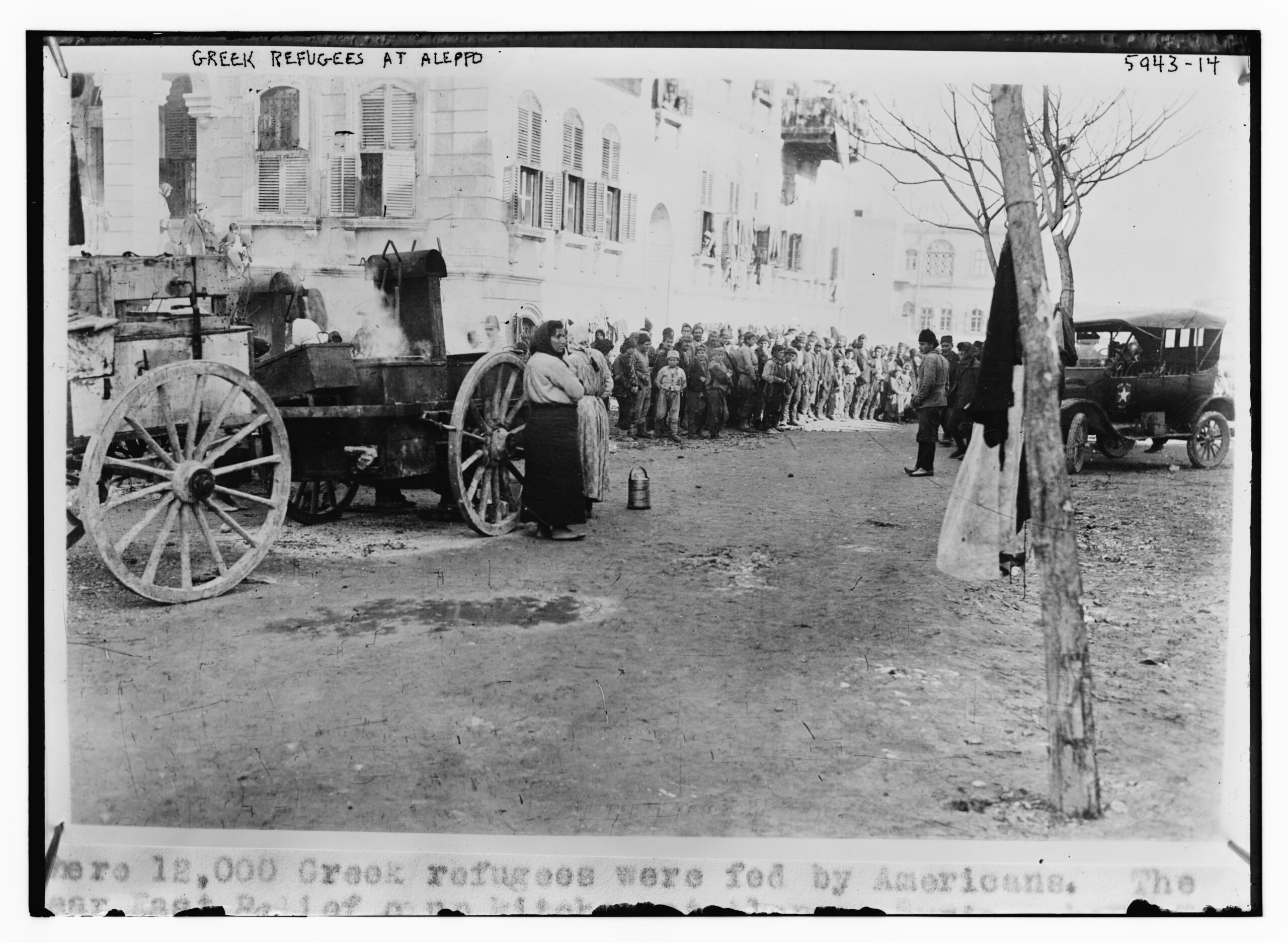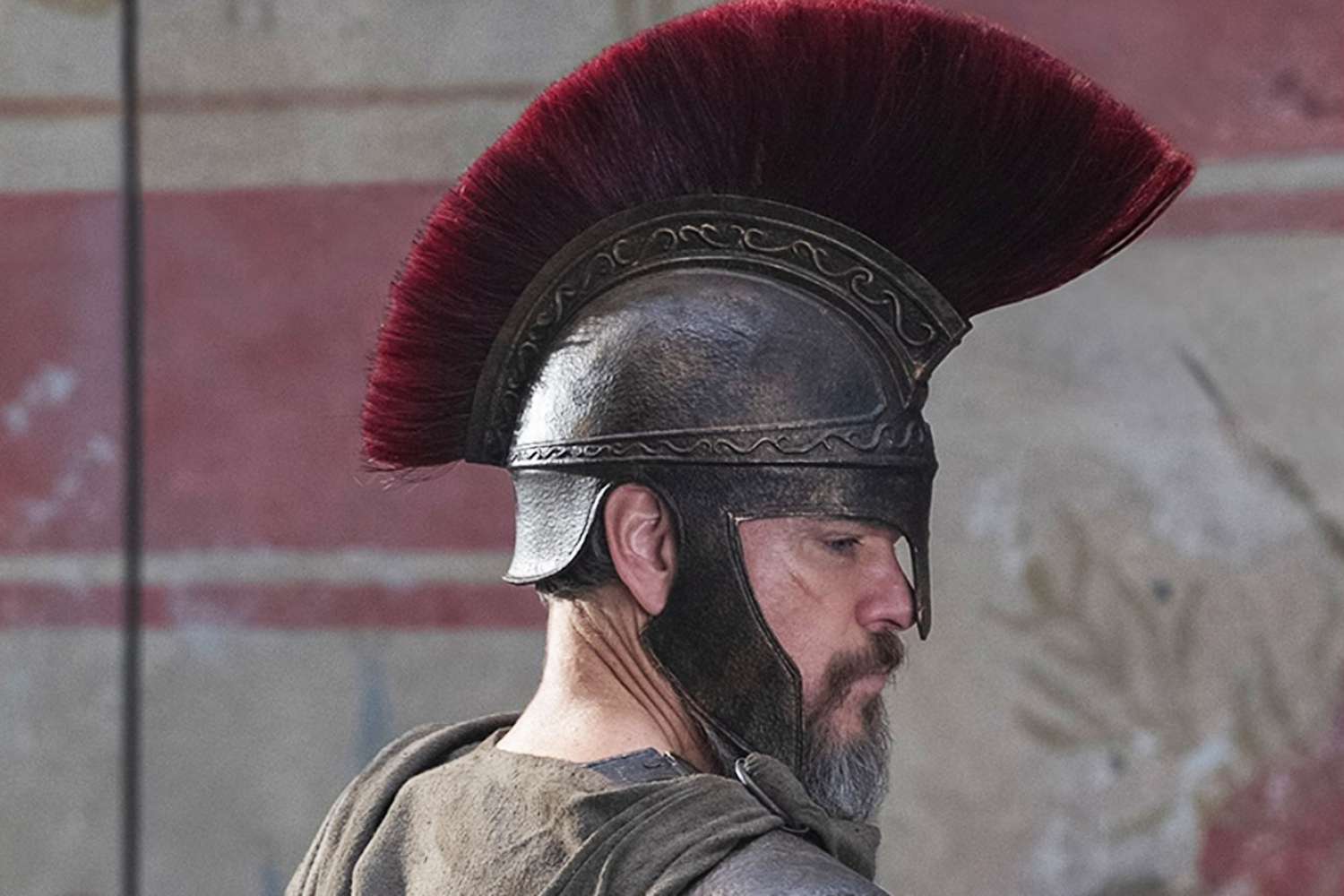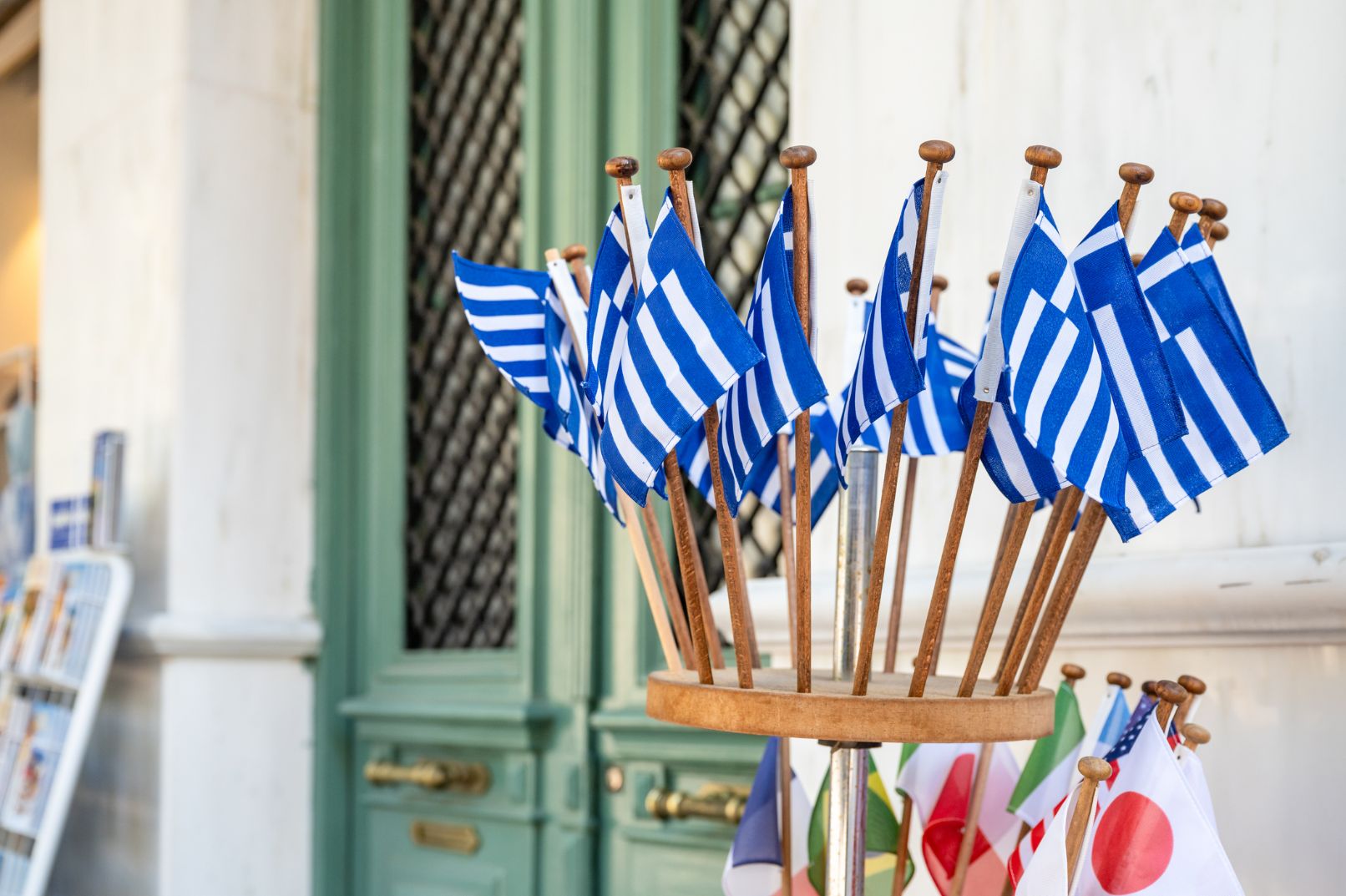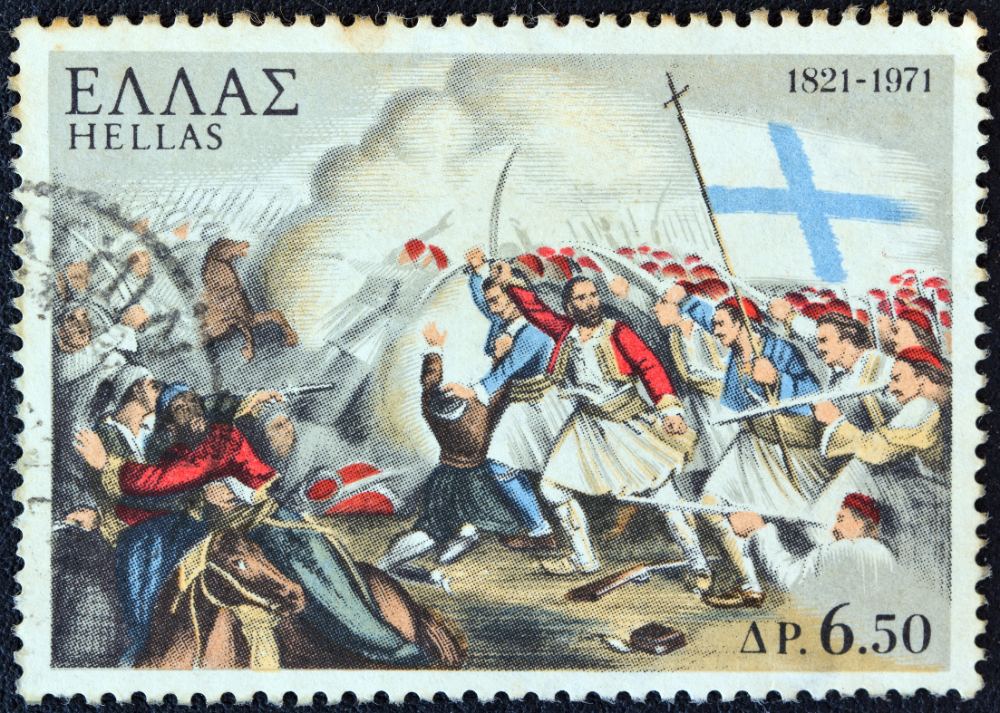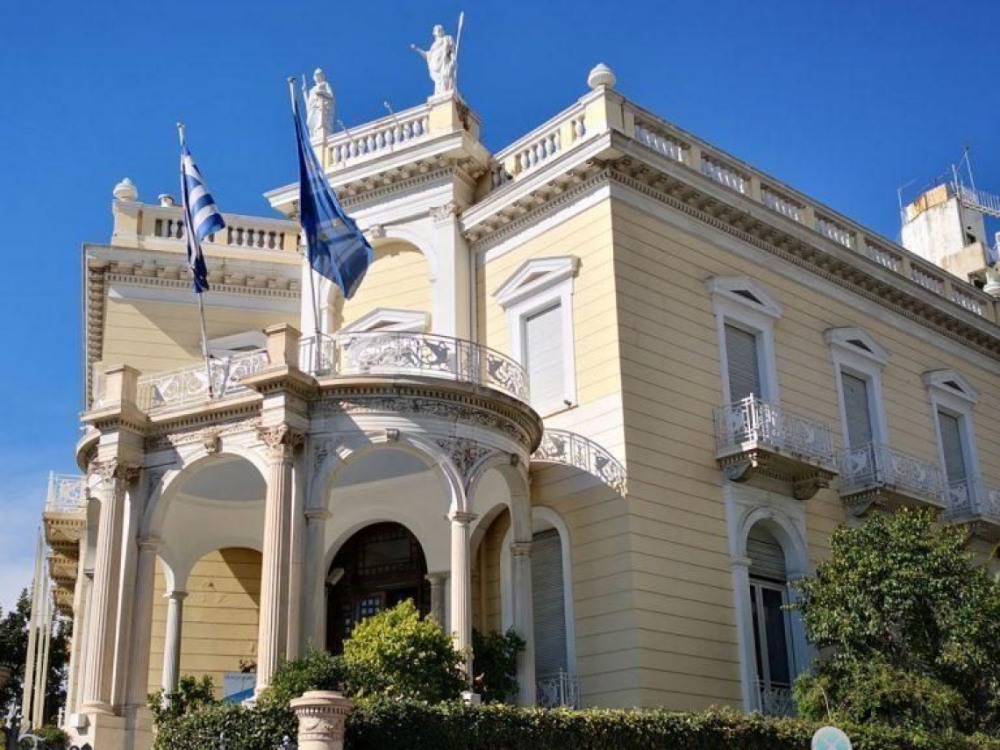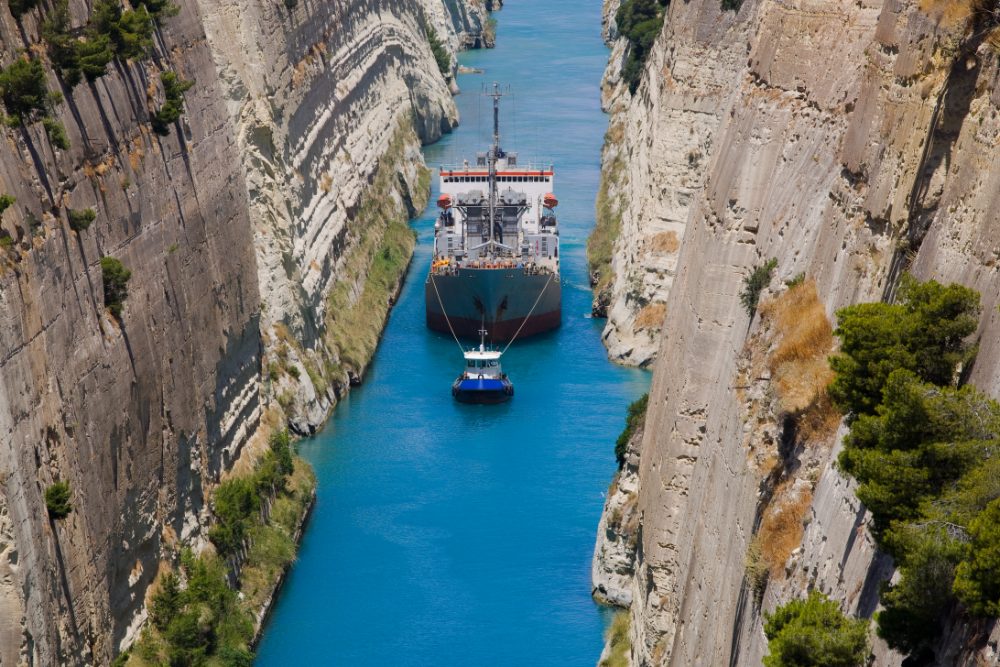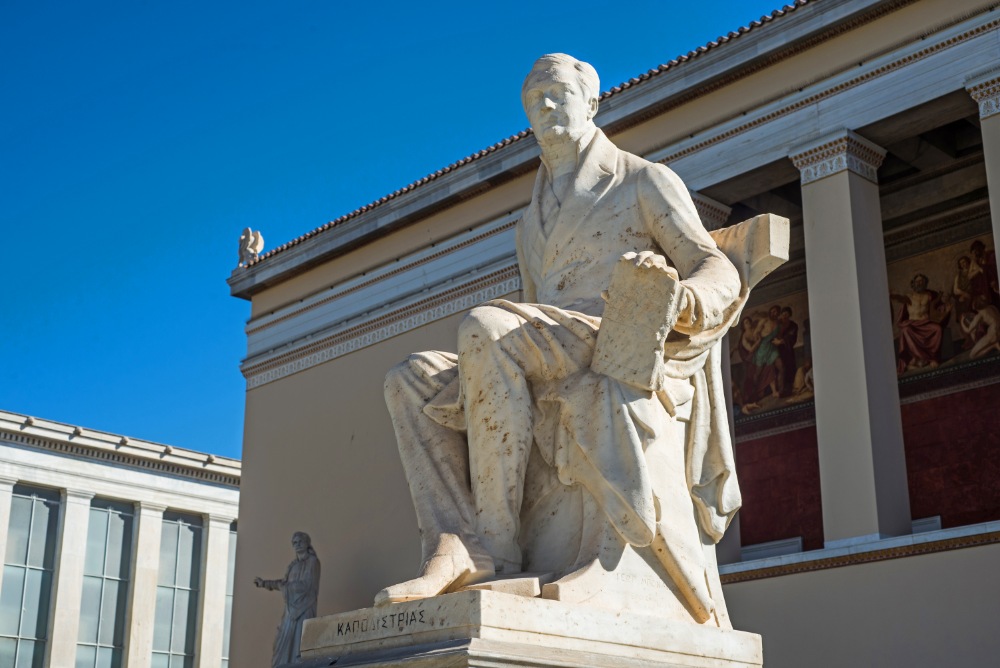A Monument of Faith, History, and Architectural Splendor
The Cathedral of Saint Minas, located in the heart of Heraklion, Crete, is one of the largest and most significant Orthodox churches in Greece. Dedicated to Saint Minas, the city’s patron saint, the cathedral is a masterpiece of 19th-century religious architecture that continues to serve as a symbol of faith and cultural heritage.
Construction of the cathedral began in 1862 under the direction of architect Athanasios Moussis, but work was interrupted by the Cretan Revolution (1866–1869). After years of delay, the cathedral was finally completed in 1895, standing as a magnificent cruciform structure with a grand central dome. Covering 1,350 square meters, it is the largest cathedral in Crete and one of the most impressive in Greece.
Adjacent to the cathedral stands a smaller 18th-century church, also dedicated to Saint Minas, which was the primary place of worship during the Ottoman occupation. The feast day of Saint Minas, celebrated on November 11, is an important religious event in Heraklion, attracting thousands of worshippers.
The cathedral’s interior is adorned with stunning frescoes, intricate wood carvings, and grand chandeliers, reflecting the rich artistic traditions of the Orthodox faith. Today, it remains a major religious and cultural landmark, welcoming both pilgrims and visitors who seek to experience its spiritual significance and architectural beauty in the vibrant city of Heraklion.

